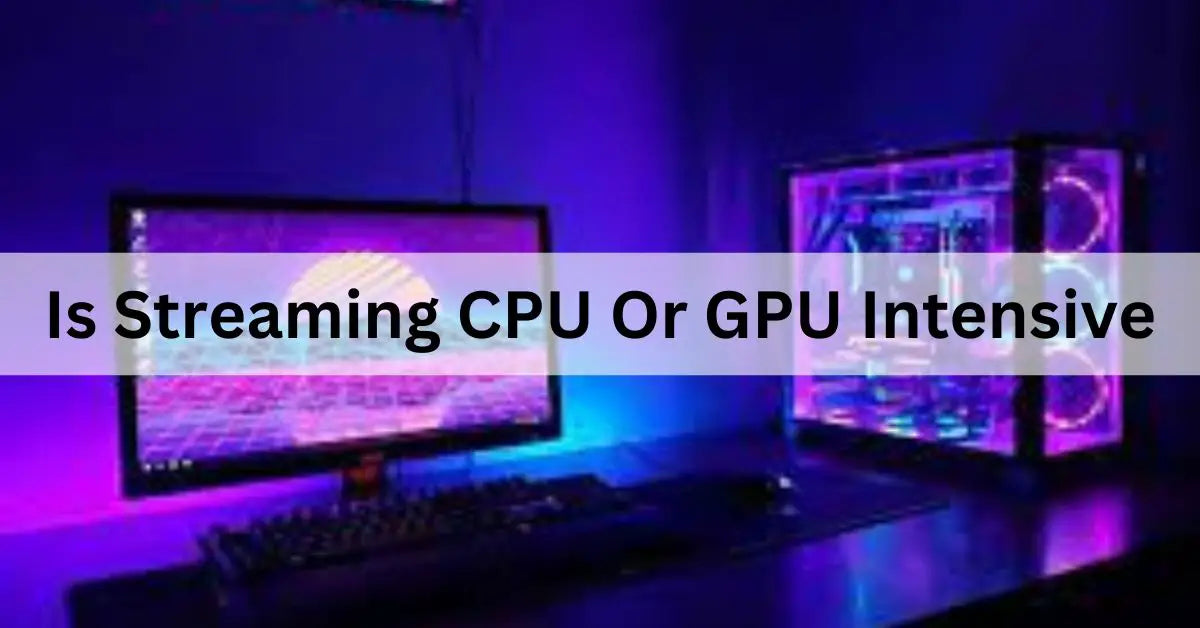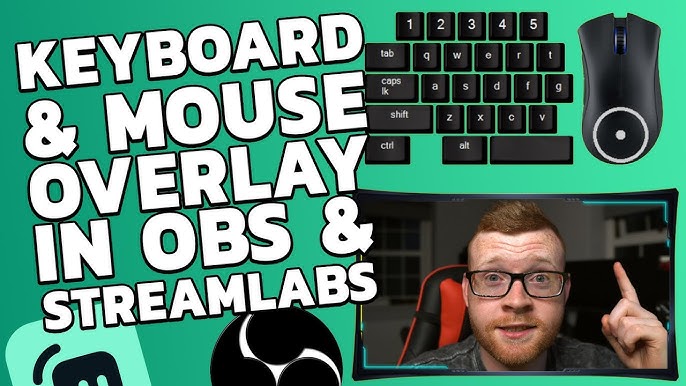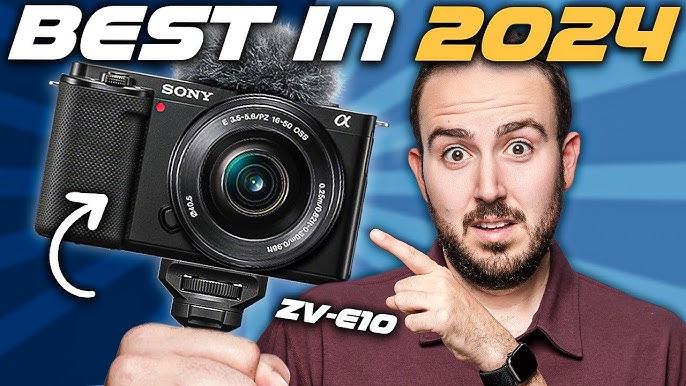Is Streaming CPU Or GPU Intensive? Uncover the Key Factors
Streaming involves both the CPU and GPU, but which one matters more? The answer can depend on the type of streaming and the hardware you use.
Streaming video content to platforms like Twitch or YouTube requires considerable processing power. The CPU handles encoding, which converts video files into the correct format for streaming. This process is demanding and can use a lot of your CPU’s resources.
On the other hand, the GPU is crucial for rendering graphics, especially during gameplay. It ensures smooth visuals and high frame rates. Understanding the roles of both components can help you optimize your streaming setup for better performance. Let’s explore how each part contributes and what to consider for your streaming needs.
Introduction To Streaming
Streaming has become a staple in modern entertainment and communication. Whether you’re broadcasting a gaming session, hosting a webinar, or sharing a live event, streaming connects you with a global audience instantly. But have you ever wondered what makes streaming smooth and high-quality?
The Rise Of Streaming
Streaming has skyrocketed in popularity over the last decade. Services like Twitch, YouTube Live, and Facebook Live have revolutionized how we consume content. People now prefer live and interactive experiences over traditional pre-recorded videos.
This shift has led to an increased demand for reliable and high-quality streaming. The quality of your stream often depends on the hardware you use. But is it more about the CPU or GPU?
Importance Of Hardware
Hardware plays a crucial role in the streaming experience. Your CPU (Central Processing Unit) and GPU (Graphics Processing Unit) both contribute to how well your stream performs. Understanding their roles can help you optimize your setup.
For instance, the CPU is responsible for encoding the video, managing background tasks, and ensuring smooth performance. On the other hand, the GPU handles rendering graphics and offloading tasks from the CPU. Both components work together to deliver a seamless streaming experience.
But which one should you prioritize? If you’re streaming high-resolution games, a powerful GPU is essential. However, if you’re multitasking or managing multiple applications while streaming, a robust CPU is just as important.
Have you ever experienced lag or dropped frames during a stream? It’s likely due to inadequate hardware. Investing in a good CPU and GPU can significantly enhance your streaming quality.
Now, think about your current setup. Are you satisfied with your streaming quality? If not, it might be time to upgrade your hardware. Experiment with different configurations to find the perfect balance for your needs.
What are your thoughts? Do you prioritize CPU or GPU for streaming? Share your experiences and help others in the community make informed decisions.
Cpu Role In Streaming
Streaming has become a daily activity for many. Understanding the role of the CPU in this process is vital. The CPU, or Central Processing Unit, is the brain of the computer. It handles many tasks that keep your stream running smoothly. Let’s dive into what the CPU does during streaming.
Cpu Tasks During Streaming
The CPU has multiple tasks during streaming. It encodes video data, turning it into a format suitable for streaming. The CPU also manages audio encoding, ensuring that sound is clear and synchronized. Additionally, it handles various background processes, like chat management and overlay updates.
Impact On Performance
The CPU’s performance directly affects the quality of your stream. A strong CPU ensures smooth video and audio. It reduces lag and prevents frame drops. If the CPU is weak, you may experience buffering, poor audio, and choppy video. Therefore, having a capable CPU is crucial for an uninterrupted streaming experience.
Gpu Role In Streaming
In streaming, the GPU plays a vital role. It handles many tasks that improve the streaming experience. Without a good GPU, streaming quality may drop. Let’s explore how the GPU contributes to streaming.
Gpu Tasks During Streaming
The GPU handles video encoding. This process converts raw video into a format suitable for streaming. It also manages rendering frames. This ensures smooth visuals during the stream. The GPU processes complex graphics. It keeps the game or video running smoothly. This is crucial for maintaining a good viewer experience.
Impact On Quality
A powerful GPU enhances streaming quality. It provides higher resolution and better frame rates. This results in clearer and smoother streams. Viewers enjoy a more immersive experience. The GPU also reduces lag. This is important for live streaming. Any delay can affect the viewing experience. With a capable GPU, streams run more efficiently and with fewer issues.

Credit: ms.codes
Balancing Cpu And Gpu
Balancing CPU and GPU performance is key for optimal streaming. Both play crucial roles in delivering a smooth viewing experience. The CPU handles tasks like encoding and managing data flow. The GPU processes video rendering and graphical tasks. Finding the right balance ensures no bottlenecks occur, keeping your stream running smoothly.
Optimal Configurations
Choosing the right hardware is crucial. A powerful CPU can handle multiple tasks simultaneously. For instance, an Intel i7 or Ryzen 7 are excellent choices. These processors have multiple cores and high clock speeds.
On the GPU side, a mid to high-end graphics card is recommended. NVIDIA’s GTX 1660 or RTX 2060 are good options. These GPUs can render high-quality graphics without lag. Combining a strong CPU with a capable GPU creates a stable streaming setup.
Hardware Synergy
CPU and GPU synergy is essential. Both components need to work well together. If the CPU is too weak, it cannot keep up with the GPU. This leads to performance issues. A balanced setup prevents one component from holding the other back.
Ensure your hardware is compatible. Check that your motherboard supports both CPU and GPU. Proper cooling systems are also important. Overheating can cause performance drops. Use high-quality cooling solutions to maintain hardware efficiency.
Regular maintenance is necessary. Keep your system clean and dust-free. Update drivers regularly for optimal performance. Following these steps ensures a smooth and efficient streaming experience.
Software And Encoding
When it comes to streaming, the software and encoding choices you make can have a significant impact on performance. Encoding is the process that converts your video and audio into a digital format that can be streamed over the internet. It’s a crucial step, and whether it leans more heavily on your CPU or GPU can vary depending on your setup and the software you use.
Encoding Software Choices
There are several encoding software options available, each with its own strengths and weaknesses. OBS Studio and XSplit are popular among streamers for their flexibility and ease of use. OBS Studio, for instance, offers a wide range of settings that allow you to balance quality and performance. XSplit, on the other hand, is known for its user-friendly interface and advanced features.
Choosing the right software can depend on what you prioritize. If you’re looking for something free and highly customizable, OBS Studio is a solid choice. If you prefer a more straightforward setup with additional support, XSplit might be the better option.
Cpu Vs Gpu Encoding
When it comes to encoding, you have two main choices: CPU encoding and GPU encoding. CPU encoding, using software like x264, relies on your processor. It’s known for providing high-quality streams but can be very demanding on your CPU, potentially affecting other tasks.
On the other hand, GPU encoding leverages your graphics card to handle the encoding process. Software like NVENC for NVIDIA GPUs and AMF for AMD GPUs can offload the work from your CPU, allowing you to maintain performance in other areas. GPU encoding tends to be less taxing on your system overall.
So, which is better? If you have a powerful CPU and want the highest possible stream quality, CPU encoding might be the way to go. However, if you’re looking to maintain overall system performance, especially during intense gaming sessions, GPU encoding can be a great alternative.
Have you ever found your stream lagging while your game runs smoothly, or vice versa? That’s often a sign that you need to reconsider your encoding choices. By understanding the demands of your software and balancing your CPU and GPU usage, you can optimize your streaming setup for the best performance.
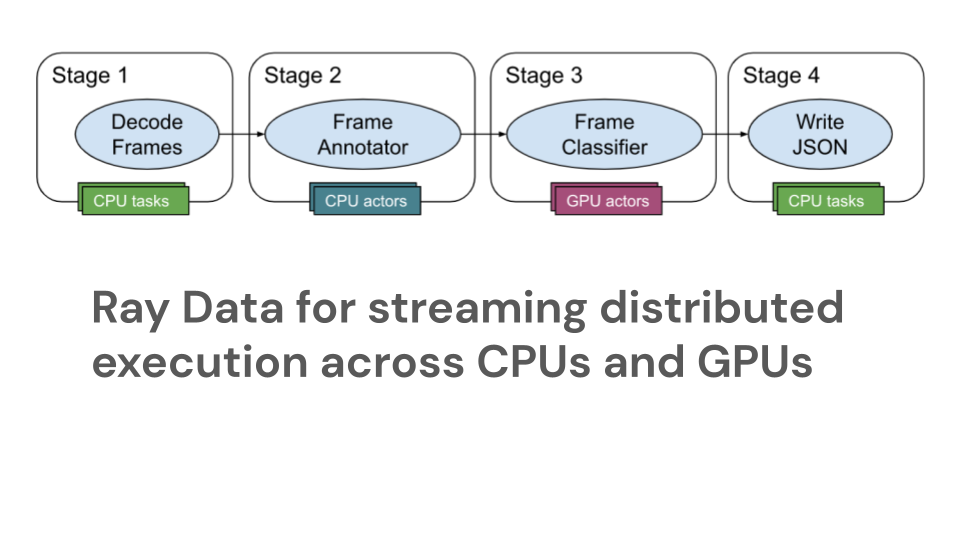
Credit: www.anyscale.com
Factors Affecting Performance
Streaming performance depends on both CPU and GPU. The CPU handles tasks like encoding, while the GPU manages graphics rendering. Balancing both is key to smooth streaming.
When it comes to streaming, the performance of your setup can make or break your experience. Several factors influence whether streaming is more CPU or GPU intensive. Knowing these can help you optimize your system for smoother streams. Let’s dive into the main factors affecting performance.Resolution And Bitrate
Resolution and bitrate significantly impact your streaming performance. Higher resolution means more data is processed, putting a heavier load on your GPU. Have you ever noticed your stream lagging when switching to 1080p from 720p? That’s your GPU working overtime. Bitrate also plays a crucial role. A higher bitrate ensures better quality but demands more from your CPU. Balancing between resolution and bitrate is key for optimal performance.Game Type And Complexity
The type and complexity of the game you’re streaming can also affect performance. Fast-paced, graphic-intensive games like “Call of Duty” are more GPU demanding. On the other hand, strategy games like “Civilization VI” rely heavily on the CPU due to complex calculations. Are you streaming a simple indie game? Your system might handle it differently, utilizing fewer resources. Understanding the game’s requirements helps you allocate resources efficiently. By considering these factors, you can optimize your streaming setup for better performance. Are you ready to tweak your settings for the best streaming experience?Real-world Scenarios
Streaming has become a staple in content creation. Many wonder if streaming is more CPU or GPU intensive. Understanding real-world scenarios can help answer this question.
Case Studies
Different streamers have shared their experiences. One popular streamer found that a powerful CPU significantly improved their stream quality. They used an Intel i9 processor. This allowed them to handle multiple tasks smoothly. Another streamer focused on their GPU. They used an NVIDIA RTX 3080. This improved their gaming performance while streaming. These case studies highlight different needs for different setups.
Performance Benchmarks
Benchmarks provide a clear picture. Tests show that high-end CPUs handle streaming tasks better. This includes encoding and running multiple applications. For GPUs, benchmarks reveal better graphics performance. This is crucial for game streaming. The NVIDIA RTX series stands out here. Both components play important roles. The choice depends on what you prioritize: multitasking or graphics.
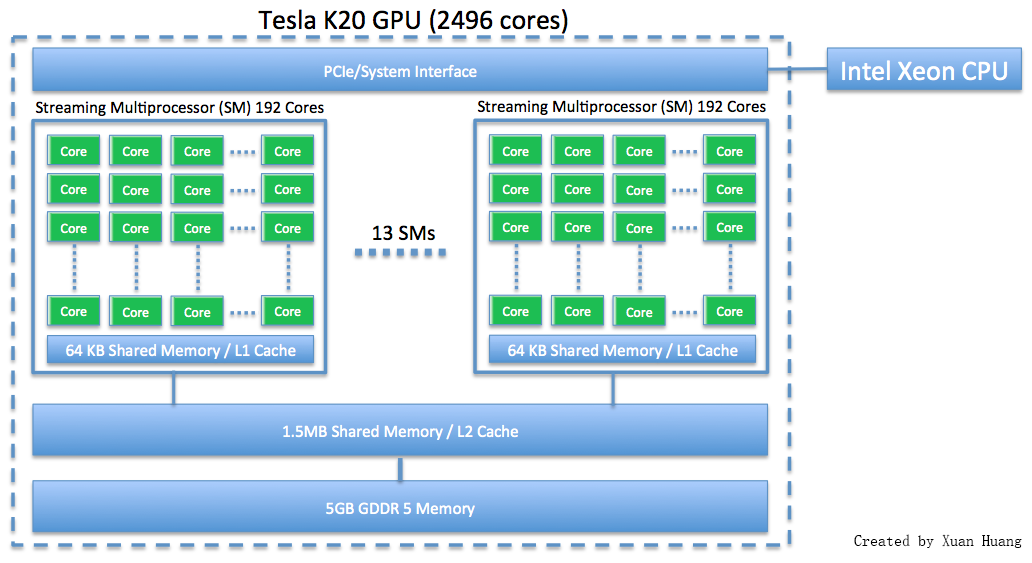
Credit: hpcf.umbc.edu
Future Of Streaming Hardware
The future of streaming hardware is an exciting topic for many tech enthusiasts. As streaming grows, both CPUs and GPUs will see significant advancements. It is essential to understand how these changes will impact the streaming experience.
Technological Advancements
CPUs are becoming faster and more efficient. New models focus on handling multiple tasks at once. This improvement is crucial for streamers. It allows for smoother performance during live broadcasts.
GPUs are also seeing rapid innovation. They are designed to handle complex graphics and visuals. This capability is vital for high-quality streaming. Better GPUs mean clearer and more detailed streams for viewers.
Predictions And Trends
Experts predict that streaming hardware will continue to evolve. Future CPUs will likely integrate more AI features. These features will help optimize streaming processes. It will make streaming more accessible to everyone.
Trends indicate a rise in the use of dedicated streaming devices. These devices will combine powerful CPUs and GPUs. They will offer a seamless streaming experience. Both professionals and hobbyists will benefit from these innovations.
Frequently Asked Questions
Is The Cpu Or Gpu More Important For Streaming?
The CPU is generally more important for streaming. It handles encoding and multitasking. A strong GPU also helps.
Is Obs More Cpu Or Gpu Intensive?
OBS is generally more CPU intensive. Encoding tasks and streaming require significant CPU resources. GPU is also used, especially for game streaming.
Is Streamlabs Cpu Or Gpu Intensive?
Streamlabs is both CPU and GPU intensive. It uses CPU for encoding video and GPU for rendering graphics. Optimize settings for balanced performance.
Is 4k More Cpu Or Gpu Intensive?
4K resolution is more GPU intensive. Rendering high-quality graphics requires significant GPU power. The CPU handles general tasks but isn’t the primary load bearer. For smooth 4K performance, invest in a powerful GPU.
Conclusion
Streaming relies heavily on both CPU and GPU. The right balance depends on your setup. Strong CPUs handle encoding tasks better. Powerful GPUs enhance video quality. Your specific needs determine the best choice. Consider your hardware and streaming goals. Test different settings to find what works.
Keep your system cool for best performance. Remember, both components play key roles. Choose wisely for smooth streaming experiences. Happy streaming!
